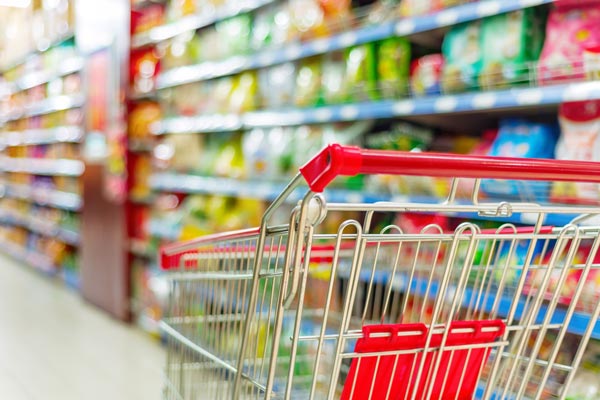- Median basket value now at >INR 900/basket against INR 650 in early March
- Essentials like Food & Grocery, Apparel, FMCD & Electronics, Furniture & Furnishings and QSR to see V-shaped recovery within 2-3 quarters; Beauty, Wellness / Personal Care & Home Essentials may take up to 4-6 quarters
- Avg. bill value up by over 25% across segments
- Omni-channel retail takes centre stage; in-mall doubling as urban warehouses to ensure fast delivery
- Hygiene & sanitation now of prime importance in malls; touchpoints automation and digitalization the new norm
Mumbai September 3, 2020: Amidst the pandemic-induced slowdown, essential goods will fuel Indian retail industry’s growth in the coming quarters as consumer expenditure continues to remain focused on essentials—particularly food and grocery—reveals the latest report by ANAROCK & Retailers Association of India (RAI) titled ‘Indian Retail – Certainty Despite Headwinds’.
The average bill value for essentials has gone up 1.5 times after lifting of lockdownؙ—from INR 650 per basket in early March to more than INR 900 per basket presently.
Food and grocery, followed by apparel, FMCD and electronics, furniture and home furnishings and QSR will see a V-shaped recovery within the next 2-3 quarters. Other segments like beauty, wellness and personal care and home essentials may take 4-6 quarters to recover fully.

Organised retail and e-commerce are on an upswing. According to IBEF, the share of Indian organized retail will double to 18% in 2021 (from 9% in 2017). Likewise, e-commerce is expected to more than double to 7% from the previous 3% in the same period.
Anuj Kejriwal, MD & CEO – ANAROCK Retail says, “COVID-19 will work as a catalyst for the growth of organised retail and e-commerce in India. Online spending is on a marked rise with online shoppers projected to increase from 15% in 2019 to 50% of the total online population by 2026.”
“In other new retail industry trends, omnichannel retailing is evolving rapidly with brands collaborating actively to enhance their reach. Many are using malls or in-mall stores as urban warehouses to ensure a faster delivery to customers and are tying-up with existing e-commerce/delivery portals to leverage their existing network and ensure reduced additional cost.”
Kumar Rajagopalan, CEO, Retailers Association of India (RAI), says “Omnichannel was gaining importance before the pandemic. The pandemic has enhanced the importance of retailers having an omnichannel strategy since concepts of digital browsing, click and collect, curbside delivery, video shopping etc. have gained importance. The pandemic has propelled consumers to purchase based on convenience either as delivery to home or by shopping at offline nearby stores or by time scheduled shopping.”
In today’s pandemic-transformed retail landscape, essential commodities are a top priority for Indian shoppers. Recent surveys by RAI suggest that grocery and fashion are the top two preferred options immediately after relaxations in lockdown. As many as 33% of consumers were excited to shop post the lockdown while 75% of respondents in tier-II & tier-III cities plan to visit stores in malls in the next 3 months. Offline retailers have witnessed a conversion rate of 90% post-COVID-19 versus 20% – 40% pre-COVID-19.
A Sanitized Shopping Experience
The report further highlights that hygiene and sanitation measures being adopted by malls and store operators to combat the COVID-19 blues. Above all, mall owners are looking to minimize touchpoints by going digital and sanitizing cars before letting them in the parking spots. With valet services, cars are sanitized before and after the car is returned to a customer. Sanitization of customers’ belongings before mall entry also figures high on the list.
Store operators are sanitizing apparel after every trial, and steam-ironing them before returning them to the rack after 24 hours. Apart from social distancing markers at billing counters, both bags and products are sanitized after purchase. Many are also using technology for consumers to order before entering the store, or for home delivery of products. Automation and contactless technology will redefine the shopping experience in the future, and retailers will need to adopt such technologies.
Other Highlights
- Digitally influenced spending is estimated to reach USD 550 Bn (30-35% of all retail sales) by 2025 from USD 45-50 Bn (8-10% of all retail sales) in 2016.
- 70% of retailers anticipate business recovery in more than 6 months and 20% in more than a year, as per RAI survey.
- India to be the 3rd largest consumer market in the world after USA and China.
- Nuclear families spend 30% more than joint families; nuclear households will grow to 74% in 2025 from 70% in 2016.
- Revenue sharing models to ease rental pressure; retailers modifying business models to partner with mall owners to combat the situation.
Download the report: https://www.anarock.com/






